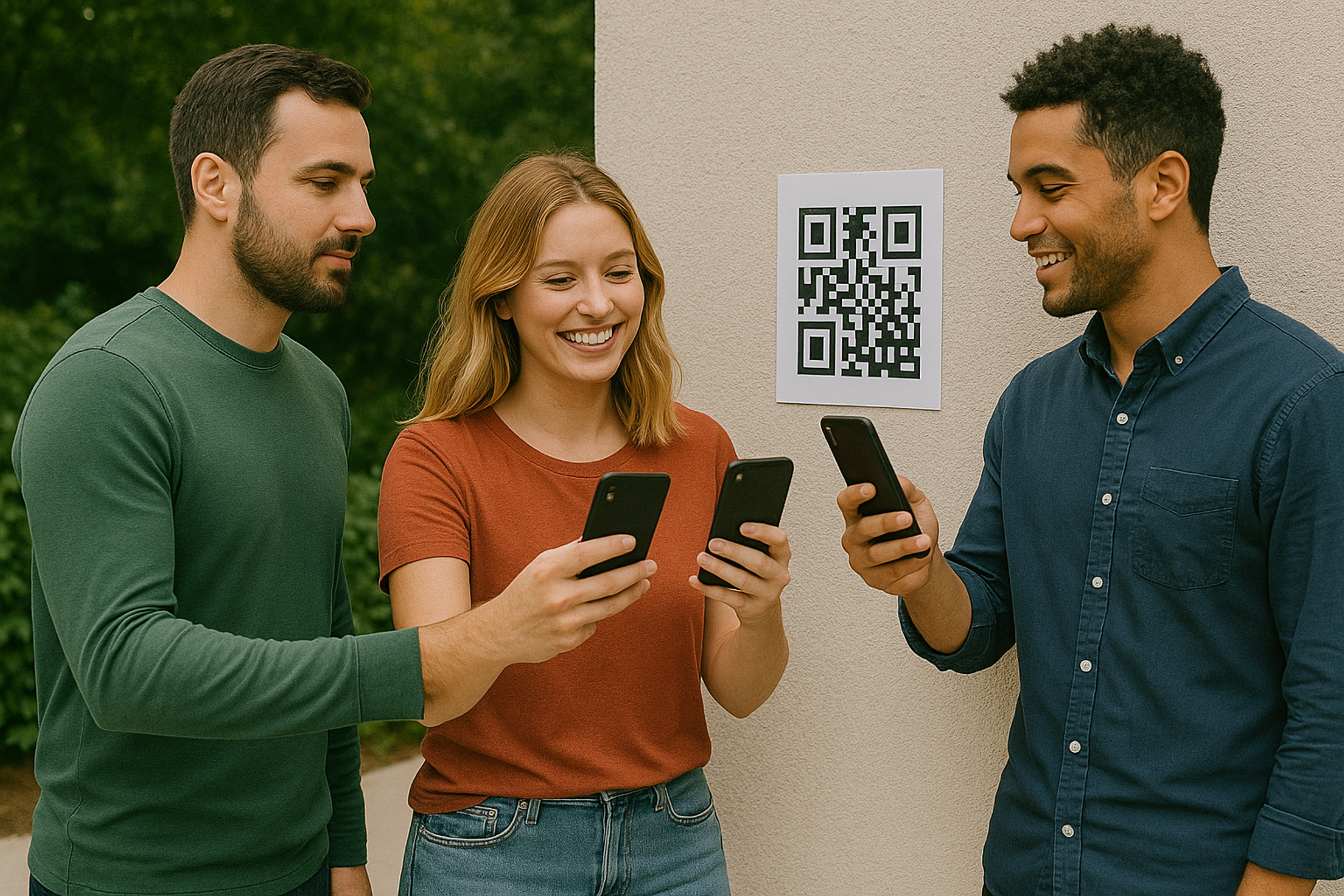Friday, January 1, 2025
How to Use a QR Code : A Step-by-Step Guide

In today’s fast-paced digital world, how to use a QR code effectively can make a significant difference for your small business or marketing campaigns. Whether you’re looking to streamline customer engagement, track promotional efforts, or provide instant access to key information, QR codes offer a versatile solution.
At QR Kit, our dynamic QR code generator empowers you to create, customize, and monitor QR codes with ease, no tech wizardry required. In this article, we’ll walk you through everything you need to know about using QR codes, from the basics to advanced strategies, so you can drive more traffic, engagement, and conversions.
What Is a QR Code?
A QR (Quick Response) code is a two-dimensional barcode that stores information such as URLs, text, or contact details. When scanned with a smartphone or tablet camera, the embedded data is instantly retrieved and displayed on the user’s device.
Static vs. Dynamic QR Codes
- Static QR Codes
- Encode data directly into the QR pattern
- Data cannot be edited once generated
- Analytics are unavailable
- Dynamic QR Codes
- Encode a short redirect URL pointing to your content
- Editable destination: update the target URL at any time
- Analytics: track scans, time, location, and device type
Why Use Dynamic QR Codes for Your Business?
Dynamic QR codes bring several advantages over their static counterparts, making them ideal for professional marketing efforts.
Key Benefits
Editability
- Change the destination URL after printing or deploying
- Pivot campaigns without reprinting physical materials
Analytics & Tracking
- Monitor total scans, unique users, scan locations, and devices
- Make data-driven decisions and optimize your marketing strategy
Enhanced Features
- Password protection, expiration dates, and scan limits
How to Use a QR Code: Step-by-Step Guide
Ready to learn how to use a QR code for your business? Follow these simple steps to create, customize, and deploy dynamic QR codes with QR Kit.
Step 1: Choose a Dynamic QR Code Generator
Start by selecting a reliable platform. Look for:
- User-friendly interface
- Customization options (colors, logos
- Built-in analytics and reporting
- Competitive pricing and a free trial
Why QR Kit? We offer all these features and more - plus, you can create your first dynamic QR for free.
Step 2: Select QR Code Type & Input Data
Decide on the type of QR code you need based on your campaign:
- Website URL: Direct users to your landing page or online store
- Wi-Fi Access: Let guests connect seamlessly
- PDF or File: Deliver downloadable resources
- Social Media: Link to your profiles or posts
Step 3: Customize Design
Make your QR code stand out and align with your brand:
- Colors: Use brand colors—but ensure sufficient contrast
- Logo: Place your logo at the center for instant recognition
- Shape & Pattern: Choose from various modules and eye-catching patterns
Step 4: Generate and Download
Once you’re happy with the design:
Click Generate QR Code
Choose your preferred format: PNG, SVG or PDF
Download the file for digital or print use
Step 5: Test Your QR Code
Before deployment:
- Scan with multiple devices (iOS, Android)
- Test under different lighting conditions
- Confirm the URL redirects correctly and loads quickly
- Use our Free QR Code Scanner, no installation needed, simply upload your QR code image to instantly verify it works.
This testing ensures a seamless user experience and avoids broken links.
Step 6: Deploy and Track Analytics
- Print Materials: Flyers, brochures, posters, product packaging
- Digital Channels: Emails, websites, social media graphics
- Physical Locations: Storefront windows, point-of-sale displays
Log in to your QR Kit dashboard to monitor:
- Total and unique scans
- Geographic hotspots
- Peak scan times
- Device types and operating systems
Best Practices for Using QR Codes
To maximize scan rates and user satisfaction, adhere to these best practices when learning how to use a QR code.
Placement and Print Quality
- Size Matters: Minimum 2 x 2 cm for print; larger for billboards
- Clear Space: Leave a “quiet zone” (margin) around the QR code
- High Resolution: Use vector formats (SVG) for sharp printing
Design Considerations
- Contrast: Dark code on a light background ensures readability
- Logo Balance: Keep the logo size under 30% of the code area
- Testing After Customization: Always re-scan post-design tweaks
Call-to-Action Clarity
- Use action verbs: “Scan to Shop,” “Scan for Menu,” “Scan to Win”
- Place QR codes near relevant text or images
- Provide context on what users will get after scanning
Creative Use Cases for QR Codes
In-Store Promotions
- Instant Discounts: Scan to apply coupons at checkout
- Loyalty Programs: Sign up or check points balance
Event Management
- Digital Tickets: Replace paper tickets with QR-based entry
- Feedback Forms: Direct attendees to surveys immediately
Packaging and Product Labels
- Instructional Videos: Demonstrate product use via a quick scan
- Ingredient Source: Link to sustainability reports or farm origins
These examples illustrate the versatility of QR codes in enhancing customer experience and streamlining operations.
Learning how to use a QR code effectively opens up a world of possibilities for small business owners and marketing managers. With dynamic QR codes from QR Kit, you can:
- Update your campaigns on the fly
- Gain deep insights with robust analytics
- Engage customers with branded, memorable experiences
Ready to elevate your marketing and track performance like a pro? Sign up for QR Kit today and create your first dynamic QR code for free, no credit card required. Empower your business with the ultimate QR code solution and watch your engagement soar!



